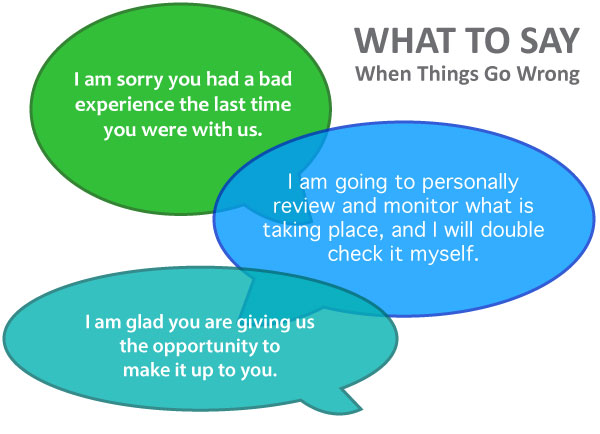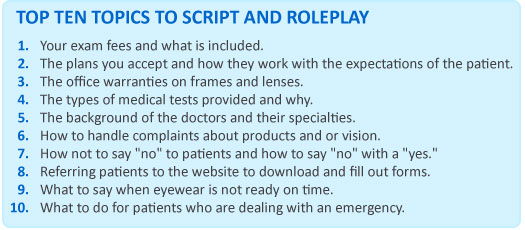What do Marriott, Disney, Starbucks, McDonald's and many other successful businesses have in common?
They are all focused on "consistently" delivering an experience that keeps them growing as market leaders. They invest the time, money and resources necessary to support their goals, all of which are focused on growing both top line and bottom line results by "protecting" the "total" experience of their patrons. This is the key to their success and the road toward its continuation as they do not assume that the approach they used yesterday is going to be the same tomorrow.
Focus on the Customer at Every Location
Our focus is typically more on product training, and we often underestimate the importance of consistent execution of the customer experience at each location. Worse yet, we pat ourselves on the back thinking we provide a great experience when we don't. Intent does not equal result. The more locations we have, the harder it is to consistently control the experience. Yet it is our most important initiative. Multi-location practices can easily fall short of the desired experience, therefore leaving patients open to trying local smaller competitors for more personalized attention.
Starbucks gets away with charging a premium for a cup of coffee because the consumer knows the taste of the coffee and the experience in the store will be the same wherever they go. As a matter of fact, because of the Starbucks phenomenon, consumers are spending more on coffee now than ever before.

When rehearsing scripts with your staff, think Google and have some fun to inspire creativity that will 'delight ' your patients.
When you deliver excellence, consumers feel more comfortable about spending money, and they take pride in knowing they are a loyal patron, to the point of even becoming "braggers" about it. The new word to think about is "delight." We must delight consumers every time. Simply exceeding expectations is yesterday's news.
Think about a patient who has returned to you after two years. The first year they had a great experience. When they walked in they were greeted with a smile, the tech said a few encouraging words about the new digital progressive lenses you provide, the doctor advised them on what they needed in order to achieve clear and comfortable vision, and the optician rounded out the experience by showing the value of the eyewear. Everybody was happy.
Then he comes in with his wife, and they are helped by a staff that rushes through the process and barely skims the surface on delivering the same experience for her. Now, the door is open for them to look elsewhere. You may have the ability to delight your patients, but if your team is not consistent, you're just playing roulette.
'Delight'ful Training
You must implement a "delight them" training center that provides:
- How to hug your patients and make sure they are happy.
- How to explain features and benefits in patient-friendly language.
- Communicating comparative value.
- What not to say and how not to say it.
- Human interaction skills.
- Understanding the social aspect of working with patients.

You have to provide an experience for your staff in order for them to provide the experience to your patients. Are you training them in a back room full of boxes and debris that needs a new coat of paint? Do you hand them a few pages from an old manual that should have been tossed years ago? Do you have videos set up with people demonstrating the experience and not just talking about it? Have you considered hiring a few professional actors to create an experience video? Think Google and how far they go to create an environment that inspires creativity to fuel their company. Better yet, how about taking your staff on a shopping tour? Have them visit your competitors to know and understand what you do not want them to do. Or have them visit some big box retailers that are doing a great job.
Another option is to take them all to a great restaurant and have them stay at a really nice hotel. Then have them submit to you a full report on what they liked and/or did not like about their experience. WOW to a whole different level. You have to invest in your team.
Roleplaying and Scripting for Consistency
So what does all this have to do with roleplaying and scripting? Everything! Roleplaying and scripting is not just about getting your staff to study a few words on a piece of paper and repeat it over and over like a bunch of robots. It's about the human experience and how to deliver it by experiencing it.
Have your team submit the questions patients ask most often. Then have them write down what their responses are. Explain how their answers may or may not support your goals and why. Discuss how we shut down the patient experience with TMI (Too Much Information). What about all the questions we answer that were never asked? Yikes! There is no better way to lose the patient then by impressing them with useless information that only confuses them into leaving.
Once you have the actual script, rotate the role of the patient among every member of your staff, including your doctors. This way, a new staff member gets to practice in a safe way with the entire team. Do this on a daily basis from day one, and keep it going until trainees no longer need their written materials and can seamlessly talk the talk.

Jay Binkowitz, optometric business consultant, is chief executive officer and president of GPN, exclusive provider of The EDGE.
Evan Kestenbaum, MBA, is chief information officer of GPN, Exclusive Provider of The EDGE. Contact Jay and Evan directly at clientservices.gpn@gmail.com.